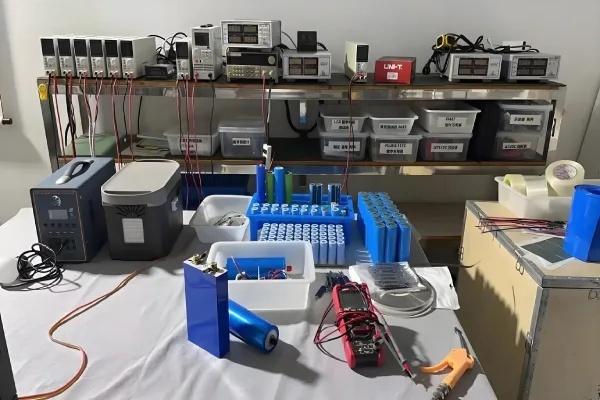
Building your own LiFePO4 car battery can be a cost-effective way to save money, boost performance, and take full control of your vehicle’s energy system. While it requires careful planning, safety awareness, and the right parts, assembling a custom battery pack at home is entirely doable. This guide will take you through everything involved in making your own DIY LiFePO4 car battery—from preparation and cell selection to assembly and safe practices.
Before you begin, it's important to understand both your vehicle’s needs and the specifics of a LiFePO4 battery system. Here are the key points to consider:
1. Vehicle Specifications
- Battery Type: Identify your current battery type (e.g., lead-acid, AGM) and note its voltage and capacity (Ah).
- Voltage System: Determine whether your vehicle uses a 12V, 24V, or higher electrical system.
- Space & Weight: Measure your battery compartment to ensure everything fits. LiFePO4 batteries are generally lighter than lead-acid ones, which helps.
2. Battery Requirements
- Capacity Needs: Estimate the amp-hour (Ah) rating based on your driving habits and power usage.
- Discharge Rate: Make sure the cells you choose can handle high-demand situations, like starting the engine.
- Cycle Life: LiFePO4 batteries typically last between 3,000 and 5,000 cycles, offering a solid long-term investment.
3. Battery Configuration
- Series & Parallel: A standard 12V system usually requires a 4S setup (4 cells in series). Add parallel connections to increase capacity.
- Cell Matching: Always use cells from the same brand and batch to ensure consistency and safety.
4. Battery Management System (BMS)
Select a BMS that matches your battery’s configuration. Important features include overcharge protection, over-discharge protection, short-circuit protection, and cell balancing.
5. Charging System
- Charger Compatibility: Only use a charger made specifically for LiFePO4 chemistry.
- Charging Capacity: Confirm that the charger’s voltage and current ratings match your battery pack.
6. Safety & Regulations
- Fuses and Circuit Protection: Install appropriate fuses or breakers to guard against overcurrent issues.
- Legal Compliance: Check local regulations regarding aftermarket battery modifications, especially for electric or hybrid vehicles.
7. Installation & Maintenance
- Secure Mounting: Ensure the battery is firmly installed to avoid vibration or movement.
- Regular Maintenance: Periodically inspect voltage levels, cell balance, and insulation for long-term safety.
Learning how these cells are manufactured can give you a better appreciation of lithium battery technology. The main steps include:
- Mixing: Active materials, binders, and solvents are combined into a slurry.
- Coating: The slurry is applied to collector foils and dried.
- Pressing: Electrodes are compressed to ensure uniform density.
- Slitting: Sheets are cut according to the cell design.
- Stacking: Positive and negative sheets are layered with separators in between.
- Encapsulation: Cells are wrapped, vacuum-dried, and heat-sealed.
- Electrolyte Injection: Electrolyte is added and the cell is sealed.
- Formation: Cells undergo charge/discharge cycles to activate their chemistry.
- Capacity Grading: Cells are tested and sorted based on performance.
- Shaping: Cells are finalized for use in battery packs.
While this industrial process is highly technical, DIY builders can skip it entirely by purchasing ready-made LiFePO4 cells.
Assembling your own LiFePO4 car battery involves connecting cells in series and parallel. For instance:
- A 48V 20Ah pack can be built using a 16S7P configuration (16 cells in series, 7 in parallel).
- Use a 16S BMS to handle protection and balancing.
- Make sure to include proper insulation using spacers, tape, and heat shrink tubing.
Basic DIY Assembly Steps:
1. Gather your materials: cells, spacers, nickel strips, BMS, and a protective case.
2. Arrange cells into series and parallel groups.
3. Securely spot weld or solder the connections.
4. Add insulation using spacers and heat shrink wrap.
5. Install the BMS to monitor voltage, current, and temperature.
6. Mount the finished pack in your vehicle.
⚠️ Warning: DIY battery packs can be dangerous if not assembled correctly. Always prioritize insulation, protection circuits, and secure connections.
- Inspection: Before installation, double-check all connections, terminals, and fuses.
- Installation: Follow polarity markings closely—incorrect wiring can cause permanent damage.
- Testing: Use a multimeter to confirm the voltage is within the expected range before connecting it to your car.
Safety should always come first when building or handling lithium batteries. Keep these precautions in mind:
- Use High-Quality Components – Only source genuine cells and certified BMS units.
- Work Safely – Assemble in a well-ventilated area, away from flammable materials, and keep a fire extinguisher nearby.
- Wear Protective Gear – Insulated gloves and safety goggles are strongly recommended.
- Avoid Short Circuits – Handle tools carefully to prevent sparks and overheating.
- Use Proper Chargers – Only charge with LiFePO4-compatible chargers.
- Balance Cells – Ensure all cells are at the same voltage before assembly.
- Store Correctly – For long-term storage, keep batteries in a cool, dry place at 40–60% charge.
- Regular Inspections – Periodically check for swelling, corrosion, or unusual heat.
- Educate Yourself – Learn the basics of lithium batteries before starting your project.
- Emergency Preparedness – Have a plan in case of thermal runaway or fire.
Building a DIY LiFePO4 car battery can be a rewarding project that saves money and improves your vehicle’s performance. By choosing quality cells, using a reliable BMS, and following strict safety measures, you can create a powerful and long-lasting battery pack.
That said, assembling lithium batteries does come with risks. If you’re not comfortable working with electrical systems, it might be safer and more practical to buy a pre-assembled LiFePO4 battery from a trusted supplier.
Next:China's Lithium Battery Export Controls Reshape Global Energy Landscape
Previous:CALB Unveils Breakthrough Technology, Leading the Green Bus Revolution at Busworld Europe 2025